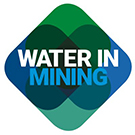As part of the project’s Aquatic Effects Monitoring Plan and Surveillance Network Program (AEMP/SNP), the GNWT must monitor water quality, upstream and downstream of highway water crossings along the ITH, and around the granular source pits used for highway construction. Monitoring results are compared to water quality objectives (WQOs) defined in the AEMP/SNP, and the data are interpreted to provide an understanding of physical and chemical processes contributing to observed water quality, such as metal leaching, permafrost degradation, and introduction of suspended sediment load from the granular materials. Monitoring has been carried out annually since 2014 during the open water season. The presentation will include an overview and key results of the AEMP/SNP as it relates to water quality monitoring.
Monitoring results up to 2018 have shown that total concentrations of several parameters (e.g., DO, pH, aluminum, iron, copper) at downstream water crossing sites which do not meet the WQOs are linked to similar background concentrations. Pit drainage has been linked with recurring exceedances of several parameters including turbidity, sulphate, nitrate and nitrite, selenium and uranium with respect to the WQOs. These exceedances are likely linked to erosion and/or leaching of the granular materials, as well as degradation of permafrost and slumping of the pit walls.
Dissolved element water quality monitoring data from the ITH sites have been compared to published data of lakes impacted and unimpacted by thaw slumping, a process which is indicative of permafrost degradation. Comparing ratios of major cations to major anions ((Ca+Mg)/(Na+K) to SO4/Cl) SRK has identified signatures in major ion chemistry that may be linked to permafrost degradation. Our interpretation indicates that permafrost degradation has and may still be occurring along some sections of the highway and at some of the granular source pits.
Temporal changes of (Ca+Mg)/(Na+K) and SO4/Cl ratios indicate that samples from highway water crossings are shifting towards Na-K-Cl-SO4 dominated waters which suggests a decreasing influence of permafrost disturbance, which is likely due to freezeback. A similar assessment of temporal changes of (Ca+Mg)/(Na+K) and SO4/Cl values for the pit drainage is however, not straightforward given a higher influence of weathering of granular material. Our interpretation suggests that pit drainage is dominated by Ca+Mg-SO4HCO3 chemistry and that leaching processes at most pits have been relatively constant over multiple seasons. Increasing trends of chemical indicators at two pits however, indicate that the rate of permafrost disturbance may be increasing. Further monitoring and correlation to geotechnical data are required for a complete assessment of permafrost disturbance, and to assess the potential for further impacts.



